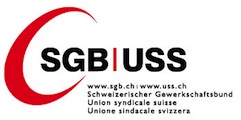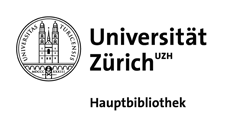Publications des institutions partenaires
Alin Marius Andries, Andreas M. Fischer and Pinar Yesin: The impact of international swap lines on stock returns of banks in emerging markets
This paper investigates the impact of international swap lines on stock returns using data from banks in emerging markets. The analysis shows that swap lines by the Swiss National Bank (SNB) had a positive impact on bank stocks in Central and Eastern Europe. It then highlights the importance of individual bank characteristics in identifying the impact of swap lines on bank stocks....
Institution partenaire
English / 27/04/2016
Jens H.E. Christensen and Signe Krogstrup: Transmission of Quantitative Easing: The Role of Central Bank Reserves
We argue that the issuance of central bank reserves per se can matter for the effectof central bank large-scale asset purchases-commonly known as quantitative easing- on long-term interest rates. This effect is independent of the assets purchased, and runs through a reserve-induced portfolio balance channel. For evidence we analyze the reaction of Swiss long-term government bond...
Institution partenaire
English / 27/04/2016
Petra Gerlach-Kristen and Seán Lyons: Mortgage arrears in Europe: The impact of monetary and macroprudential policies
Mortgage arrears arise if a household faces affordability problems and/or is in negative equity. Because widespread arrears pose a risk to the stability of banks and limit households' future access to credit, a crucial question is how monetary or macroprudential policies influence their incidence. We use a European household data set to analyse what drives arrears and find that...
Institution partenaire
English / 27/04/2016
Reto Foellmi, Sandra Hanslin and Andreas Kohler: A dynamic North-South model of demand-induced product cycles
This paper presents a dynamic North-South general-equilibrium model where households have non-homothetic preferences. Innovation takes place in a rich North while firms in a poor South imitate products manufactured in the North. Introducing non-homothetic preferences delivers a complete international product cycle as described by Vernon (1966), where the different stages of the...
Institution partenaire
English / 27/04/2016
Katarina Juselius and Katrin Assenmacher-Wesche: Real exchange rate persistence: The case of the Swiss franc-US dollar rate
Asset prices tend to undergo wide swings around long-run equilibrium values, which can have detrimental effects on the real economy. To get a better understanding of how the financial sector and the real economy interact, this paper models the long swings in the Swiss franc-US dollar foreign currency market using the I(2) Cointegrated VAR model. The results show strong evidence of...
Institution partenaire
English / 27/04/2016
Lucas Marc Fuhrer, Basil Guggenheim and Silvio Schumacher: Re-use of collateral in the repo market
This paper introduces a methodology to estimate the re-use of collateral based on actual transaction data. With a comprehensive dataset from the Swiss franc repo market we are able to provide the first systematic empirical study on the re-use of collateral. We find that re-use was most popular prior to the financial crisis, when roughly 10% of the outstanding interbank volume was...
Institution partenaire
English / 27/04/2016
Pinar Yesin: Capital flow waves to and from Switzerland before and after the financial crisis
This paper first shows that capital inflows to and outflows from financial centres were disproportionately affected by the global financial crisis. Switzerland was no exception. The paper then identifies waves of capital flows to and from Switzerland from 2000:Q1 to 2014:Q2 by using a simple statistical method. The analysis shows that private capital inflows to and outflows from...
Institution partenaire
English / 27/04/2016
Thomas Nitschka: Have investors been looking for exposure to specific countries since the global financial crisis? - Insights from the Swiss franc bond market
Bonds of Swiss non-government borrowers offered higher daily excess returns ('alphas') than suggested by their sensitivities to standard risk factors over the sample period from 2007 to 2014. By contrast, comparable bonds (same currency denomination and credit rating category) issued by foreign entities did not offer significant risk-adjusted returns and exhibited markedly different...
Institution partenaire
English / 27/04/2016
Christian Grisse and Thomas Nitschka: Exchange rate returns and external adjustment: evidence from Switzerland
This paper studies the ability of external imbalances to indicate subsequent exchange rate returns. We propose a simple twist of the Gourinchas and Rey (2007) approximation to the intertemporal budget constraint which is valid for countries that are net creditors (or net debtors) consistently throughout the sample. Our approach offers two advantages. First, it does not require the...
Institution partenaire
English / 27/04/2016
Rina Rosenblatt-Wisch and Rolf Scheufele: Quantification and characteristics of household inflation expectations in Switzerland
Inflation expectations are a key variable in conducting monetary policy. However, these expectations are generally unobservable and only certain proxy variables exist, such as surveys on inflation expectations. This paper offers guidance on the appropriate quantification of household inflation expectations in the Swiss Consumer Survey, where answers are qualitative in nature. We...
Institution partenaire
English / 27/04/2016
Gregor Bäurle and Daniel Kaufmann: Exchange rate and price dynamics in a small open economy - the role of the zero lower bound and monetary policy regimes
We analyse nominal exchange rate and price dynamics after risk premium shocks with short-term interest rates constrained by the zero lower bound (ZLB). In a small-open-economy DSGE model, temporary risk premium shocks lead to shifts of the exchange rate and the price level if a central bank implements an inflation target by means of a traditional Taylor rule. These shifts are...
Institution partenaire
English / 27/04/2016
Matthias Gubler and Christoph Sax: Skill-Biased Technological Change and the Real Exchange Rate
We sketch a model that shows how skill-biased technological change may reverse the classic Balassa-Samuelson effect, leading to a negative relationship between productivity in the tradable sector and the real exchange rate. In a small open economy, export goods are produced with high-skilled labor, in conjunction with capital and low-skilled labor, and are traded for imported...
Institution partenaire
English / 27/04/2016
Tommaso Mancini Griffoli, Christoph Meyer, Jean-Marc Natal and Attilio Zanetti: Determinants of the Swiss Franc Real Exchange Rate
We conduct an empirical investigation of the determinants of the Swiss franc real exchange rate. Theory and related empirical papers suggest various specific factors as potential determinants. We select some of these factors, and test their significance and magnitude in affecting the course of the CHF real exchange rate. Results stemming from a co-integration approach point to terms...
Institution partenaire
English / 27/04/2016
Konrad Adler and Christian Grisse: Real exchange rates and fundamentals: robustness across alternative model specifications
This paper explores the robustness of behavioural equilibrium exchange rate (BEER) models, focusing on a panel specification with Swiss franc real bilateral rates as dependent variables. We use Bayesian model averaging to illustrate model uncertainty, and employ real exchange rates computed from price level data to explore robustness to the inclusion or exclusion of fixed effects. We...
Institution partenaire
English / 27/04/2016
Barbara Rudolf and Mathias Zurlinden: A compact open economy DSGE model for Switzerland
This study describes a compact dynamic stochastic general equilibrium (DSGE) model fitted for the Swiss economy with Bayesian techniques. The model features two economies (small home economy, large foreign economy), five types of agents (households, producers of tradables, producers of non-tradables, retailers, monetary authority), nominal and real frictions, and a number of shocks...
Institution partenaire
English / 27/04/2016
Matthias Gubler: Carry Trade Activities: A Multivariate Threshold Model Analysis
In this empirical study, we analyze the relationship between carry trade positions and some key financial as well as macroeconomic variables using a multivariate threshold model. It is often stated that the Swiss franc serves as a funding currency. We therefore focus on carry trades based on the USD/CHF and EUR/CHF currency pairs over the period from 1995 to mid-2008. We conclude...
Institution partenaire
English / 27/04/2016
Raphael Anton Auer and Aaron Mehrotra: Trade linkages and the globalisation of inflation in Asia and the Pacific
Some observers argue that increased real integration has led to greater co-movement of prices internationally. We examine the evidence for cross-border price spillovers among economies participating in the pan-Asian cross-border production networks. Starting with country-level data, we find that both producer price and consumer price inflation rates move more closely together between...
Institution partenaire
English / 27/04/2016
Cyril Monnet and Thomas Nellen: The Collateral Costs of Clearing
In this working paper, we study the three generic clearing arrangements in the presence of two-sided limited commitment: simple bilateral clearing, segregated collateral clearing through a third party, and - most sophisticated of all - central counterparty (CCP) clearing. Clearing secures the settlement of obligations from over-the-counter (OTC) forward contracts that smooth the...
Institution partenaire
English / 27/04/2016
Filippo Brutti and Philip Ulrich Sauré: Repatriation of Debt in the Euro Crisis: Evidence for the Secondary Market Theory
The Euro Crisis has stopped the process of the European financial integration and triggered a strong repatriation of debt from foreign to domestic investors. We investigate this empirical pattern in light of competing theories of cross-border portfolio allocation. Three empirical regularities stand out: i) repatriation of debt occurred mainly in crisis countries; ii) repatriation...
Institution partenaire
English / 27/04/2016
Simone Auer: Monetary Policy Shocks and Foreign Investment Income: Evidence from a large Bayesian VAR
This paper assesses the transmission of monetary policy in a large Bayesian vector autoregression based on the approach proposed by Banbura, Giannone and Reichlin (2010). The paper analyzes the impact of monetary policy shocks in the United States and Canada not only on a range of domestic aggregates, trade flows, and exchange rates, but also foreign investment income. The analysis...
Institution partenaire
English / 27/04/2016
Pages
Le portail de l'information économique suisse
© 2016 Infonet Economy












